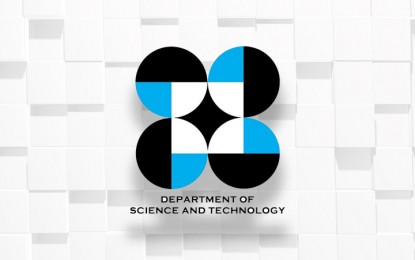
MANILA — The Department of Science and Technology is grateful for President Rodrigo Duterte's support to its endeavors.
"So far, all of our project proposals were approved," DOST Secretary Fortunato dela Peña told the Philippine News Agency (PNA) in an interview.
The agency, he noted, launched or introduced several technologies and facilities during the first half of the year.
Dela Peña earlier this month announced the launching of the country's largest satellite-tracking antenna in Davao. This will take images of certain areas to be downloaded and distributed to the concerned agencies.
It is designed to communicate with Earth observation satellites, including the Filipino-made Diwata-1 and Diwata-2 microsatellites, by receiving, processing, and distributing space-borne imagery.
Aside from post-disaster images, this facility will also be utilized for agricultural monitoring, maritime surveillance, and urban mapping.
Also launched this month is the HazardHunter app which can be accessed either through a computer or mobile phone.
This would help people know if their location is at risk for volcanic eruption, tsunami, and other hazards. The Philippine Institute of Volcanology and Seismology's fault finder is also included in the HazardHunter.
The HazardHunter is deemed also helpful for those planning to put up establishments since they would find if the area they are eyeing is at risk for disasters. One may type the location in the app to know if it is a hazard area.
The DOST has also turned over the hybrid electric train (HET) it developed to the Philippine National Railways (PNR) for adaption.
HET is said to be energy-efficient since it is powered by batteries. The train can run at a speed of about 50 kph and accommodate 220 passengers, according to DOST.
Dela Peña earlier said Transportation Secretary Tugade expressed his desire to have more units of the DOST hybrid train. "Our DOST MIRDC (Metals Industry Research and Development Center) engineers are ready for this should a decision be made," he added.
Also inaugurated was a flood forecasting system in Bicol, an early warning device for a more effective flood forecasting and warning activities.
Meanwhile, DOST's “Bicol River Basin Rehabilitation Project" also showcases an improved monitoring of hydrological conditions, and real-time data monitoring facilities that will provide full level of observations throughout the whole basin.
The agency likewise launched earlier this year its Advanced Device and Materials Testing Laboratory's (ADMATEL) 3-D X-ray machine.
The 3D X-ray Computed Tomography is set to produce high-resolution imaging for coral samples to possibly reconstruct sea surface temperature.
Another launched project was the state-of-the-art National Metrology Laboratory (NML) at the DOST Compound, which is open to the public. Private firms can also now have their equipment calibrated there, instead of sending them to foreign laboratories.
The NML's newly-renovated Mass Standards Laboratory (MSL) offers a wider scope of calibration services. For calibration of non-automatic weighing instruments, the laboratory features equipment that could calibrate up to 300 kilograms.
This laboratory can best cater to the food, manufacturing, and pharmaceutical industries.
Recently, the DOST also launched “The Perfect Fit” Project under the Textile Product Development program that aims to introduce modern technologies and innovations through the use of a 3D body scanner acquired by the department.
This would help designers, artists, retailers, and manufacturers gain easy access in prototyping of their designs and products for evaluation before public offering. Body measurement is also provided using an avatar, according to DOST.
Meanwhile, Dela Peña also noted that for this year, the DOST has admitted 9,400 baccalaureate scholars, which is higher than the 8,000 scholars admitted last year. (PNA)
